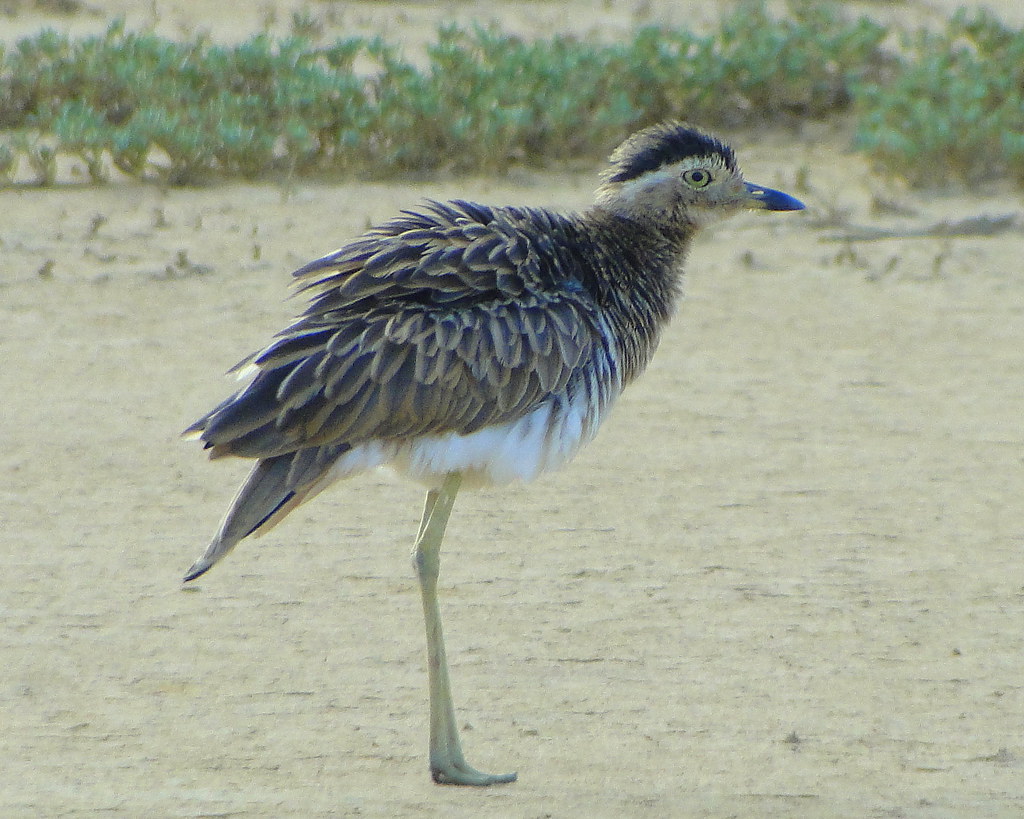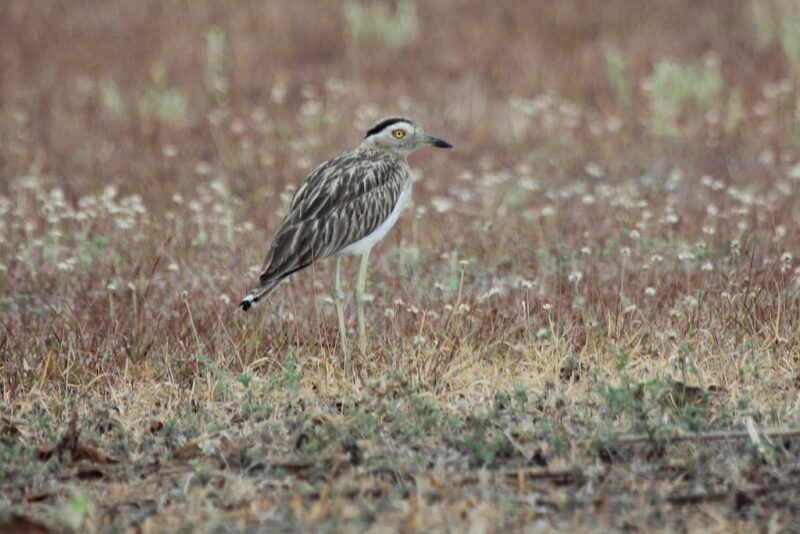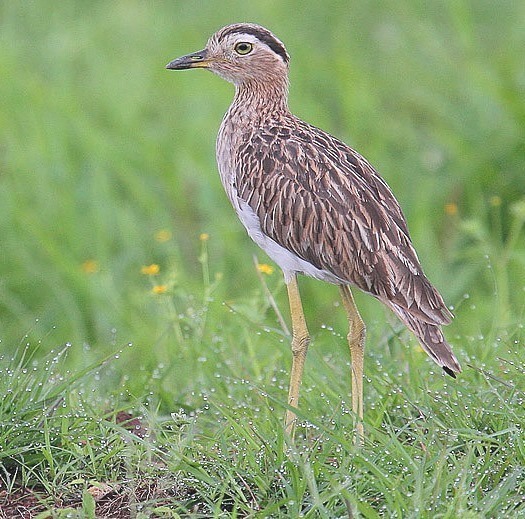Bird of the week:
The double-striped thick-knee (Burhinus bistriatus)

This bird is a stone-curlew, a group of waders in the family Burhinidae. The vernacular name refers to the prominent joints in the long greenish-grey legs and bistriatus to the two stripes of the head pattern.
Taxonomy
The double-striped thick-knee was formally described in 1829 by the German naturalist Johann Georg Wagler from a specimen collected in Mexico. He coined the binomial name Charadrius bistriatus.[2] The specific epithet bistriatus combines the Latin bi-, meaning «two-» or «double-» with striatus meaning «stripe».[3] The double-striped thick-knee is now placed in the genus Burhinus, erected by the German zoologist Johann Karl Wilhelm Illiger.
Description
This bird is a medium-large wader with a solid black and yellow bill, large yellow eyes, which give it a reptilian appearance, and cryptic plumage. The adult is about 46 to 50 cm (18–20 in) long and weighs about 780 to 785 g (27.5–27.7 oz). It has finely streaked grey-brown upperparts, a paler brown neck, and a breast merging into the white belly. The head has a solid white supercilium bordered above by a black stripe. Juveniles are similar to adults but have slightly darker brown upperparts and a whitish nape. The double-striped thick-knee is striking in flight, with a white patch on the dark upper wing and a white underwing with a black rear edge.

Distribution and habitat
It is a resident breeder from southern Mexico south to Colombia, Venezuela, and northern Brazil in Central and South America. It also occurs on Hispaniola and some Venezuelan Caribbean islands and is a scarce vagrant to Trinidad, Curaçao, and the USA. It prefers arid grassland, savanna, and other dry, open habitats.
In Costa Rica, this is a shorebird of lowland dry grassland and savannas, usually found in pairs or small groups. Active mainly at night (note the big, yellow, owl-like eyes). During the daytime, usually seen standing or sitting quietly, often in the shade of small trees or bushes.
Behavior
This is a primarily nocturnal and crepuscular species. It flies only reluctantly, relying on crouching and camouflage for concealment. The double-striped thick-knee eats giant insects and other small vertebrate and invertebrate prey. It is sometimes semi-domesticated because of its helpful function in controlling insects and has benefited from clearing woodlands to create pasture. The song, given at night, is a loud kee-kee-kee.
Breeding
The nest is a bare scrape into which two olive-brown eggs are laid and incubated by both adults for 25–27 days to hatching. The downy young are precocial and soon leave the nest.

